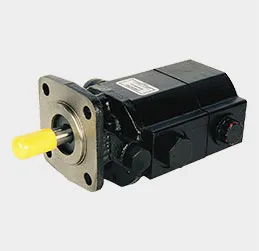Exploring the Benefits and Techniques of CNC Sand Casting in Modern Manufacturing
CNC Sand Casting Bridging Precision and Tradition in Metal Fabrication
CNC sand casting is a remarkable fusion of traditional sand casting techniques with modern Computer Numerical Control (CNC) technology. This synergistic approach not only enhances the efficiency and precision of metal fabrication but also significantly broadens the scope of applications across various industries. Understanding CNC sand casting involves delving into the nuances of both sand casting and CNC machining, uncovering how their collaboration paves the way for innovation.
The Basics of Sand Casting
Sand casting is one of the oldest and most widely used metal casting processes. It involves creating a mold from a sand mixture into which molten metal is poured. The process starts with the preparation of a pattern, usually made from materials like wood or metal, which defines the shape of the final part. The pattern is embedded in a sand mixture, typically composed of silica sand, clay, and water, forming a mold cavity once removed.
The advantages of sand casting include its ability to produce complex geometries, accommodate large parts, and utilize a wide range of metals—from aluminum to iron. However, traditional sand casting is often limited by the tolerance levels and surface finish of the parts produced, which can lead to secondary machining steps to achieve desired specifications.
Enter CNC Technology
Introducing CNC technology into the sand casting process dramatically changes the game. CNC machining utilizes computer-controlled tools to automate the cutting and shaping of materials, allowing for unprecedented levels of precision in manufacturing. When combined with sand casting, CNC technology enhances the pattern-making process by enabling the creation of highly accurate and intricate patterns.
CNC machines can produce patterns that meet tight tolerances, resulting in molds that produce cast parts with improved dimensional accuracy. This precision translates into less scrap material and significantly reduces the need for extensive secondary operations. Moreover, the use of CNC in pattern making can streamline production processes, allowing manufacturers to respond swiftly to design changes and market demands.
The Process of CNC Sand Casting
cnc sand casting

The CNC sand casting process begins with the design of a 3D model of the desired component using CAD (Computer-Aided Design) software. This model is then used to create a CNC program that directs the machining process. High-speed CNC routers or milling machines carve out the pattern from a material such as foam, metal, or plastic.
Once the patterns are created, they are used to produce the sand molds. The pattern is coated with a release agent to ensure easy removal from the sand. After the molds are prepared, molten metal is poured into the mold cavity, filling the space and taking the shape of the pattern. After the metal cools and solidifies, the mold is broken away, revealing a precise casted part.
Advantages of CNC Sand Casting
The integration of CNC technology into sand casting offers numerous benefits. First and foremost, it enhances the dimensional accuracy of castings. This is particularly advantageous in industries that demand high precision, such as aerospace and automotive manufacturing, where even the slightest deviation can lead to significant issues in performance and safety.
Additionally, CNC sand casting optimizes production efficiency. The reduced need for post-casting machining saves time and resources. Manufacturers can produce complex components more rapidly, leading to shorter lead times and quicker delivery to customers.
Lastly, CNC sand casting enables greater design flexibility. Engineers and designers can experiment with intricate designs without the fear of compromising quality. This opens up new avenues for innovation in product design, encouraging the development of lightweight, high-strength parts that meet modern engineering challenges.
Conclusion
CNC sand casting represents a significant advancement in the field of metal fabrication, merging traditional techniques with cutting-edge technology. By enhancing the precision, efficiency, and design flexibility of the casting process, CNC sand casting is poised to play a crucial role in meeting the evolving demands of various industries. As technology continues to advance, the potential for CNC sand casting to innovate and improve remains vast, paving the way for a new era in manufacturing.
-
OEM Sand Cast Pump Valve Fittings - Baoding Hairun Machinery And Equipment Trading Co., Ltd.NewsAug.01,2025
-
Custom OEM Impellers | High Efficiency & PrecisionNewsAug.01,2025
-
OEM Sand Cast Pump Valve Fittings - Baoding Hairun Machinery | Customization, Quality AssuranceNewsAug.01,2025
-
OEM Sand Cast Pump Valve Fittings - Baoding Hairun Machinery And Equipment Trading Co., Ltd.NewsAug.01,2025
-
OEM Sand Cast Pump Valve Fittings - Baoding Hairun Machinery And Equipment Trading Co., Ltd.NewsJul.31,2025
-
OEM Sand Cast Pump Valve Fittings - Baoding Hairun | Precision Engineering, CustomizableNewsJul.30,2025















